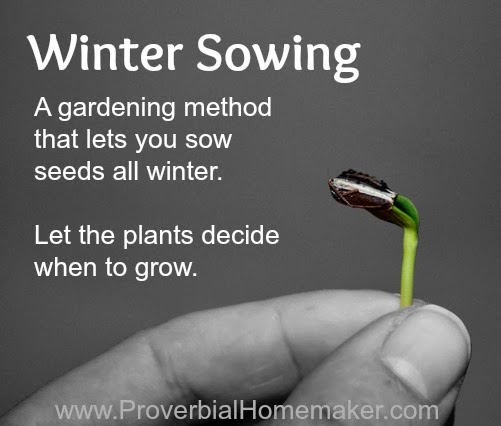
Disclosure: *This post may include affiliate links. As an affiliate, I earn from qualifying purchases. Read the disclosures and terms for more information.
What is Winter Sowing?
Winter sowing is an easy method that allows you to sow seeds all winter to produce a set of hardy starts by the time spring rolls around. It creates a tiny greenhouse environment for seeds that holds up come rain or snow. The seeds germinate and grow with their natural timing and require virtually no tending until transplant time in the spring.
How Does Winter Sowing Work?
Timing: You can start anytime. If it’s too cold outside to direct sow those seeds, it’s a good time to winter sow them! Many winter sowers start in January just after the holidays. Last year (I’m in zone 8a) I started late February but this year I started mid-January.
Seeds: Seeds that do especially well are cold/frost hardy seeds and seeds that are planted in very early spring or autumn. This includes plants like peas, kale, spinach, swiss chard, etc.
Containers: You can try many containers. As long as drainage and ventilation is accounted for and sunlight can get in, they will do well. I tried a variety of containers last year and found that milk jugs, which is the most common container among winter sowers, worked best.
Start Sowing!
Prepare Containers: All containers need drainage holes and ventilation holes. I use a power drill for this. For milk jugs, just remove the lid for ventilation. For milk jugs, I use a box cutter or knife (careful!) to cut it in half horizontally except for near the handle. Leave that intact to allow a lid hinge.
Plant: Fill with your favorite potting soil or seed starting soil. Fertilization is not required for most plants. Plant your seeds according to package directions. Water them well and close the jug lid shut, taping it down and labeling the top and underside.
Tend: After planting, I set my jugs near the house so that the radiant heat can help them stay warmer. I don’t worry about it too much though. It’s perfectly fine if they end up covered with snow. Just let them be!
Water the plants when they are just dry enough that there is no condensation in the lid. When the weather starts to warm up, you may want to open the lids during the day or permanently. You also may want to move them away from the house or find a partially shady spot. Transplant anytime after the seedlings have two or more true leaves.
My Experience
I have found that the seedlings seem a bit smaller than I expected. However, they take off and do really well when transplanted. I let some of my seedlings dry out too much last year. This year I will be more diligent with them. I will also likely leave them in the containers longer before transplanting so that they can be more able to handle potential pests.
Additional Resources
The best resource I’ve found is the Winter Sowing group on Facebook and all the files and links they provide along with community experience. Also be sure to check out the Winter Sowing area of GardenWeb (especially the FAQ section).

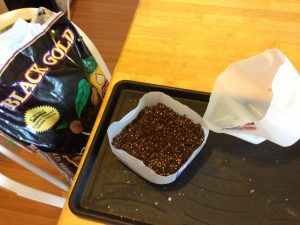
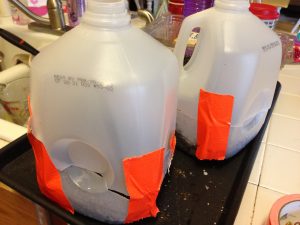
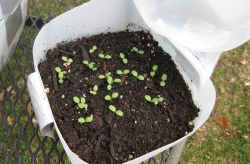



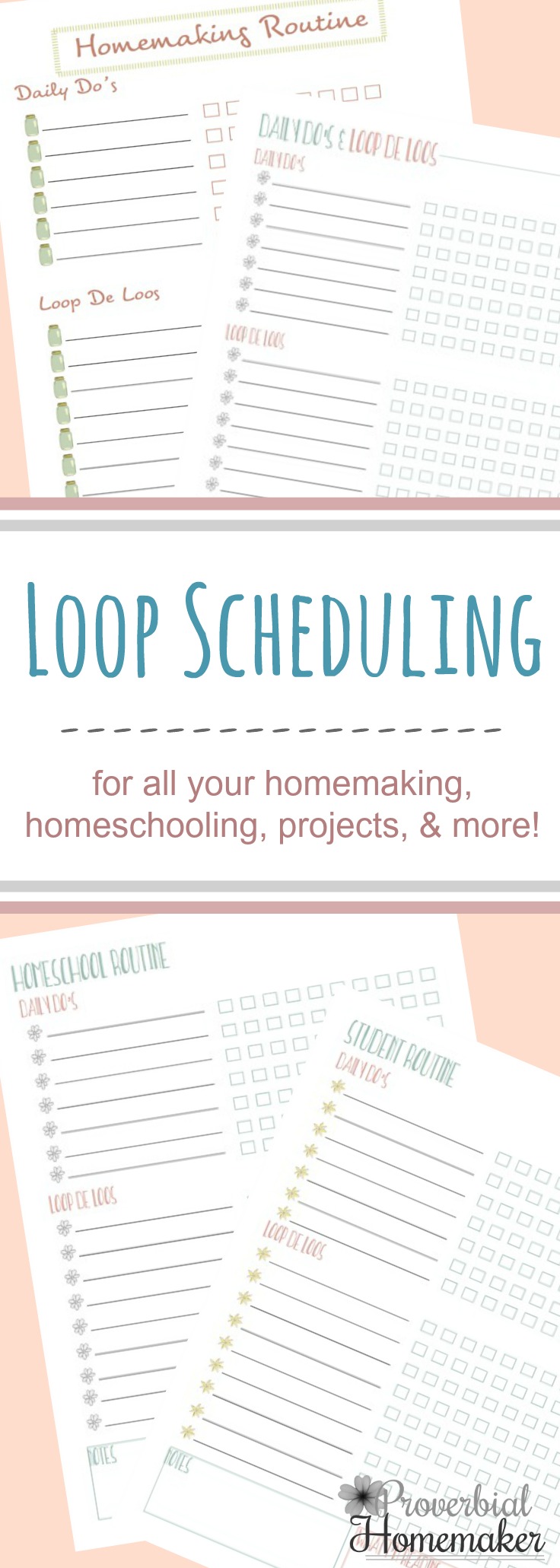

 by Stephanie, The Multi Taskin' Mom
by Stephanie, The Multi Taskin' Mom
This Post Has 2 Comments
I am SO trying this. Ever since I moved to the south from Montana 2 years ago I CANNOT figure out how to grow things. What I plant doesn’t grow and what I don’t plant comes up by myself. I jokingly told my husband that I was just going to start throwing seeds out in the garden and see what comes up. I totally didn’t know it was a real thing. Thank you SO much for enlightening me. Haha. 🙂
You’re welcome! 😀 It really is a great way to kick start your gardening.